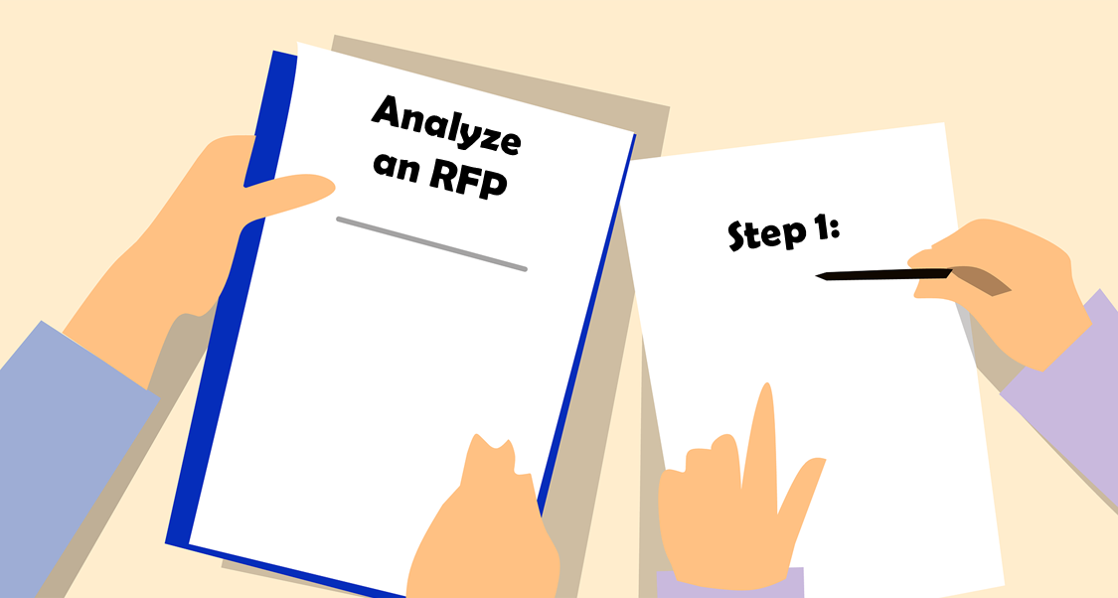2 min read
New OneTeam Features - February 2024
OneTeam users will notice a few new changes beginning February 2024. We released updates and new features to give our...
By: OneTeam on Feb 2, 2023 8:22:00 AM

The Federal Government RFP has finally been released! A Request for Proposal is a government agency solicitation for responses from offerors to perform specific tasks. Whether it is a Draft RFP or Final RFP, it needs to be analyzed thoroughly so your team can get to work on their response. Confused about where to begin and what you need to do?
When an RFP is released by the Government, it is best to have several members of the team review the RFP.
Technical personnel read Section C – SOW/PWS and Section L requirements for the Technical Response.
Management personnel read Section L and Section M for the Management response volume or sections.
Contracts personnel read the entire RFP and note Section I Contract clauses, Section G and H requirements that may be out of the ordinary.
The Capture and Proposal Manager review the entire RFP and note the Proposal due date, Industry Day, and Questions due date.
FAR 15.204-1 provides details on these sections to a Federal Government RFP.
A. Solicitation/Contract Form often consists of a one-page solicitation form (SF-33), and provides the contract name, where and when to submit the bid, contact information for the Government agency, the solicitation number, and any set-aside data for Competition type. Section A serves as the Table of Contents for the rest of the RFP.
B. Supplies or Services and Prices/Costs is a line-by-line list of billable items, also known as Contract Line Items (CLINs). These line items include labor, supplies, and other billable items like travel expenses. This section also specifies the contract pricing structure.
C. Description/Specifications/Statement of Work/Performance Work Statement is the heart of the proposal, where you learn what the agency wants from the contract. It may include specifications for materials or a detailed quality assurance plan. The SOW or PWS is what the offeror will do, how they will do it, and how the government agency wants it done.
D. Packaging and Marking details how line items are to be packed, labeled, shipped, or delivered.
E. Inspection and Acceptance details the conditions that must be met for the Government to accept the work, as well as how it will be inspected. This may be as simple as a final examination by the contracting officer at the end of the contract, or it may require you to follow and document an exacting quality assurance process. This section also includes what steps to take if the work doesn’t pass inspection.
F. Deliveries or Performance details when, where, and how different line items need to be delivered.
G. Contract Administration Data varies depending on the type of contract, the customer’s needs, and resources. Check for forms you must submit.
H. Special Contract Requirements cover anything not previously covered in other sections of the schedule.
I. Contract Clauses in a government RFP include clauses required by law. Even if no proposal response is required, these will be incorporated into your contract.
J. List of Attachments references solicitation attachments, forms, appendices, and supplementary materials. Check to ensure all attachments listed in Section J are included in the solicitation documents.
K. Representations, Certifications, and other Statements of Offerors or Respondents contain instructions on proving you are eligible to bid on and perform the contract. It may instruct you to fill out the documents or to update these documents in SAM.
L. Instructions, Conditions, and Notices to Offerors or Respondents. Section L provides the information you need to develop your Proposal Outline and should give you all the instructions you need to complete the proposal. Number of volumes, sections in each volume, page limits, font requirements, and formatting instructions.
M. Evaluation Factors for Award. Section M details how adjudicators evaluate the proposal. It should align closely with Section L requirements, but there may be some bits of information detailed in Section M that are not mentioned in Section L. Take note of any differences immediately so you can incorporate those additional Section M references into the correct place in your Proposal Outline.
This is the 3rd of a 13-part series focused on learning about Government RFPs and your response to RFPs as a government Contractor. Be sure and download our complete guide, Government RFPs: What you Must Know to Be Successful. Check back each week for another installment in the series. Happy Bidding!
OneTeam is a complete, secure, cloud-based collaboration platform for GovCons to track, qualify, capture, propose and win more contracts with fewer resources by streamlining and automating processes. OneTeam was designed and developed by a federal government contractor to address the lack of resources and time, as well as the pain associated with winning government contracts. Our team of Proposal Managers, Capture Managers, and BD Managers write extensively about business development topics and best practices.
Feb 23, 2024 by OneTeam
OneTeam users will notice a few new changes beginning February 2024. We released updates and new features to give our...
Nov 20, 2023 by Donna T. Hamby, CP.APMP
As November approaches each year, our thoughts turn to Thanksgiving with the celebrations of food, family, and...
Aug 23, 2023 by OneTeam
OneTeam users will notice a few new changes beginning August 18, 2023. We released updates and new features to give...